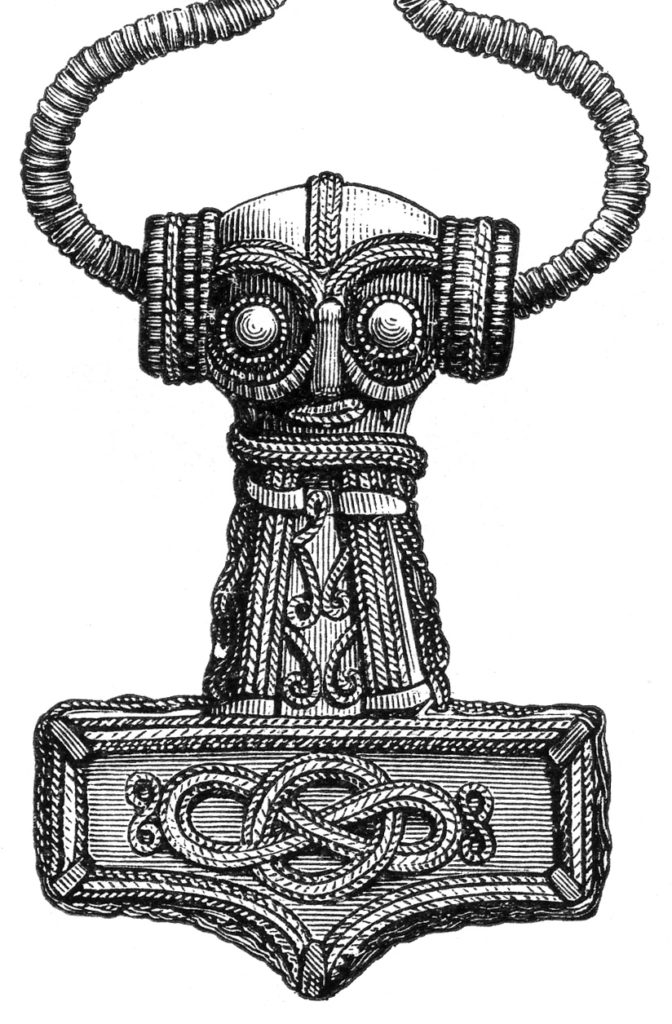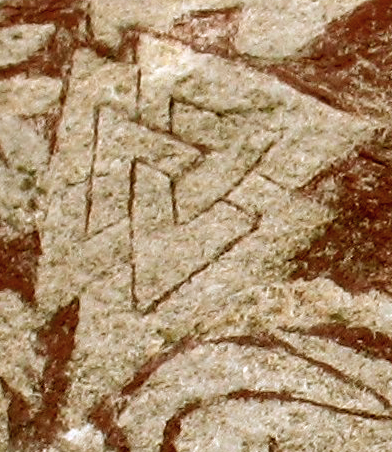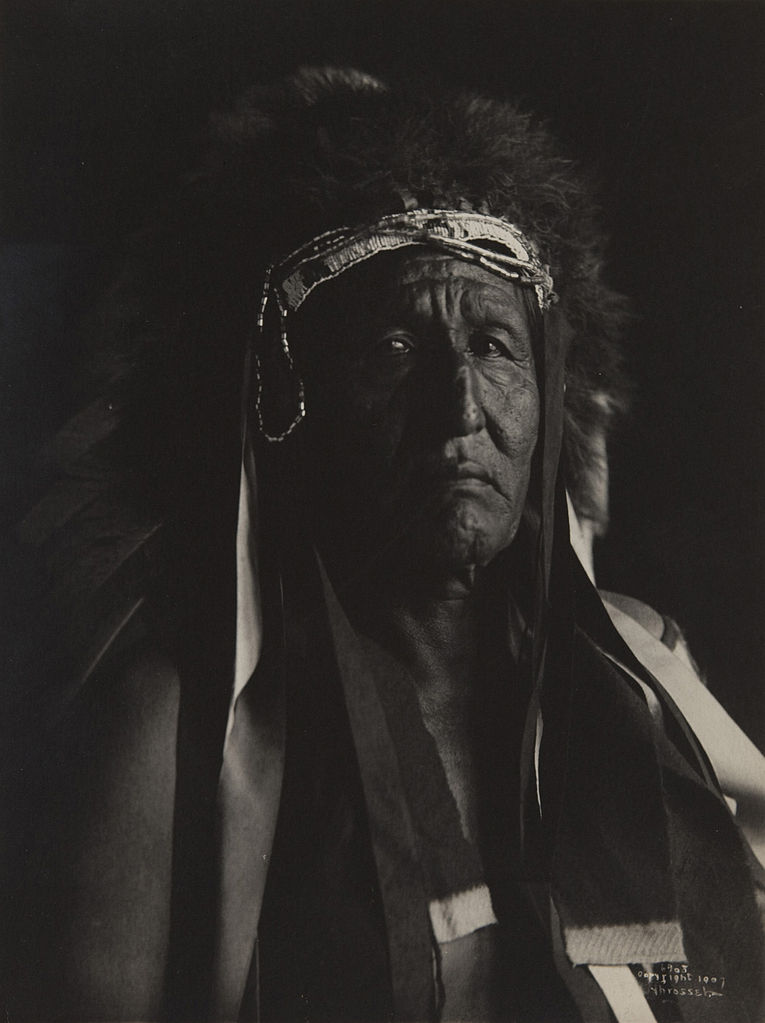
“Workshop this idea with me,” my friend said. “Inclusive Heathenry is always going to be at a disadvantage because it’s not a politico-religious movement.”
I paused, frowning. “What do you mean?”
“Put it to you this way,” she answered me. “How many Heathens do you know who come to the Inclusive movement just because it’s inclusive? And how many racist Heathens do you think chose Heathenry simply to support their racism?”
“I’m not sure that’s a bad thing,” I said, thoughtfully. “I don’t think we need to be a political movement, necessarily. Isn’t it better to believe something for its own sake?”
Twenty-four hours later, a man with Mjolnir tattooed across his abdomen posed in the abandoned chambers of the US Senate. In his hand, the American flag flew from the point of a spear.
This is the only thing I can write about this week.

Thor’s Hammer [credit: Olof Sörling]
There will be a lot of ink spilled about the man who helped to storm the Capitol this week, dressed in a parody of appropriation and jingoism – U.S. Agent as played by Lieutenant John J. Dunbar. The media will discuss who he is, why he dressed in a way that caught the eyes of the cameras, how he came to take the national mainstage.
In my corner of the internet, the conversation was much more focused. While the Heathen groups who have founded their reputation on inclusivity made statements distancing themselves and their symbols from “acts of violence and terror” in the Capitol, my cohort and I passed the photos around, letting each other know as quickly as possible that it was happening again.1
“He’s from Arizona – you know good people out there,” an acquaintance asked me. “Have they heard of him? Is he actually Heathen?”
“My friends don’t talk to the groups he’d be part of,” I said. Then I asked them anyway. They, in turn, promised to ask their contacts, and so it went on, and on.
Inside of ten minutes, I knew the man’s name and his history of posts about conspiracy theories and Biblical quotes. Inside of an hour I knew his occupation and that people were sifting through his friends list, looking for familiar names. This is how it is done, now, a community’s worth of investigative journalism swinging into action, sharing updates, preparing the dossiers that will say, conclusively, “He’s not with us. We don’t believe what he believes. Here is the list of what he has said; here is everything we know about him; and here is how we are different.”
The community knows how to do this because it has done it before – for Pueblo, Colorado; Cedar Falls, Iowa; Port Barre, Louisiana; Christchurch, New Zealand. This is the frantic movement that comes after someone hails our gods while committing acts of terror. We are all used to it.
From the moment the first photo hit my inbox I was unspeakably tired.
There is nothing surprising about any of this. The fact that a man wearing our symbols took to the halls of the U.S. Capitol and featured heavily in the coverage of an attempted coup is unpleasant, but not unexpected. The fact that he clearly stated he dresses to attract attention, to get his message out more clearly – that might make the tattoos he wears seem less personal, but it doesn’t change their content. This is a part of a pattern that predates Else Christensen: Germanic symbolism has been used to commodify and communicate racist and fascist messaging. I can’t pretend to be shocked by it.
That tradition isn’t mine. I have seen arguments saying it’s not a religious tradition at all, but simply a political one with religious trappings. Whatever it is, it is loud, it is violent, and it continues to harm those who want to use these symbols in an affirming religious practice. Inclusive Heathenry too often finds itself reacting, debating the value of another statement or the creation of another coalition in the wake of some new and violent act.
As we react, we are forced to position ourselves in relationship to racist Heathenry. “Not them,” we say. “We don’t accept that here.” It’s not a rallying cry or a call to arms. We don’t fly a flag of ideology for people to gather under. Inclusive Heathen organizations are rag tag groups of scholars, mystics, and the devout, called to the path through many roads. We bicker and struggle, and try to provide a space that isn’t “that.” Instead it is – Organic. Changing. Undecided.
Our flags do not fly in the Capitol. Our faces do not appear in the New York Times.

Valknut detail from the Stora Hammar stone, Gotland, Sweden [Photo by user “The Man in Question,” Wikimedia Commons, CC 3.0]
There is a narrative here – of appropriation, of the co-opting and misuse of religious imagery. The research we do, each time this happens, is often an attempt to prove that the individual involved is not devout. If that’s true, it is much easier to say that the images being weaponized are out of context, used for something they do not truly mean.
The truth of the matter is more nuanced, I think, and much harder to bear. The symbols that appeared in the U.S. Capitol this week have been used in the movements of nationalism and white supremacy for as long as they have been used by modern Pagans in America. Terrorists who use the valknut are not looking at Heathenry and taking our symbols in the same way as they are taking the garb of Native American tribes and wearing them out of context. They are using symbols that have been a part of American white supremacist movements for a very long time.
Heather Cox Richardson was not wrong when she called these white supremacist tattoos. They carry that meaning as clearly, and with as much American history, as they carry connotations of inclusivity and acceptance. Unfortunately, one of those meanings is being broadcast much more clearly.
It worries me that, in our attempts to combat that message, we center discussions about the use of symbols, the references to a culture we identify with. Too often those conversations drown out any discussion about the real harm being done. In my conversations this week, I heard more comments about dress and symbol than action – even though that action was an attempted coup, an attack on our nation’s founding principles and government. In our rush to prove he was not one of us, my friends and I looked away from who and what he is.
That isn’t going to go unnoticed.

Black and white photograph of a member of the Crow Tribe wearing a buffalo headdress, 1907 [Richard Throssel, public domain]
Last week, before all of this happened, my friend and I argued over the difference between inclusivity and anti-racism. “Anti-racism has to stand for something,” I said, trying to weave the thought together as the words came out. “It requires a lot of internal work. It’s difficult, it’s ongoing. Making a statement can be not-racist – we do that already – but it’s not standing for something, it’s standing against something. Anti-racism is proactive, but it has to be internal. It has to call into question our whole worldview. It’s committed, extended work.”
“People hate that,” my friend pointed out, wryly. “They can’t even look directly at it, because they might be implicated in it. They have to prove that they’re not one of the ‘bad ones.’”
“Oh, it’s awful work,” I agreed. “But we’re never going to grow as visibly or as quickly as the other guys unless we start doing it. People need to see us standing for something, and doing it on purpose. Not just cleaning up messes.”
I thought of that conversation while I watched the news, while I learned about the people dead in Washington, while I waited for the joint session to reconvene. I thought of Tyr and Forseti and Frigga, of all of the gods who govern the rule of law and the pursuit of justice. I tried to imagine a movement that was deeply religious and thus truly political. I tried to imagine something beyond inclusivity.
America has always touted the value of separating church and state, but I no longer believe that division holds. Heathenry is not the only religion that has been weaponized, or even the main one. Our holy texts are not the only ones taken out of context to control women’s bodies, justify racist violence, and ignore the needs of the poor.
I can argue that these interpretations are incorrect, but doing so means I need to offer a real and actionable alternative. The opposite of racism is not inclusion. It is anti-racism.
If we want to get involved, we can donate to community organizations who support people of color, join local chapters of anti-racist groups, and continue educating ourselves. But whatever we do, we need to talk about our actions and encourage our religious communities to get involved in those actions. We must make it very clear that we stand for something, that we are working on behalf of those values constantly, that they are inseparable from the religion that we love.
Heathenry is a religion of action. We have to do something.
This has been edited to include the fact that the Indigenous person whose photograph appears in this column was a member of the Crow Tribe.
1. Editor’s note: Luke Babb is a member of the Troth’s Rede, but is writing as a private individual.↩
THE WILD HUNT ALWAYS WELCOMES GUEST SUBMISSIONS. PLEASE SEND PITCHES TO ERIC@WILDHUNT.ORG.
THE VIEWS AND OPINIONS EXPRESSED BY OUR DIVERSE PANEL OF COLUMNISTS AND GUEST WRITERS REPRESENT THE MANY DIVERGING PERSPECTIVES HELD WITHIN THE GLOBAL PAGAN, HEATHEN AND POLYTHEIST COMMUNITIES, BUT DO NOT NECESSARILY REFLECT THE VIEWS OF THE WILD HUNT INC. OR ITS MANAGEMENT.
The Wild Hunt is not responsible for links to external content.
To join a conversation on this post:
Visit our The Wild Hunt subreddit! Point your favorite browser to https://www.reddit.com/r/The_Wild_Hunt_News/, then click “JOIN”. Make sure to click the bell, too, to be notified of new articles posted to our subreddit.
